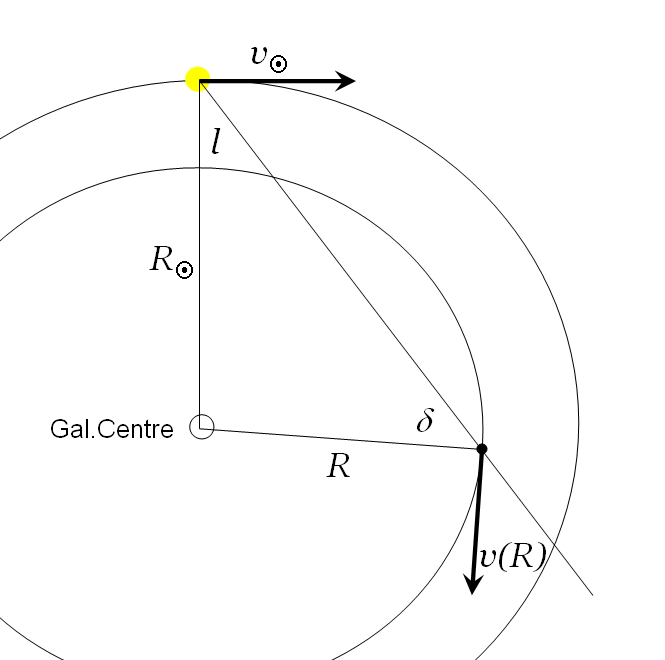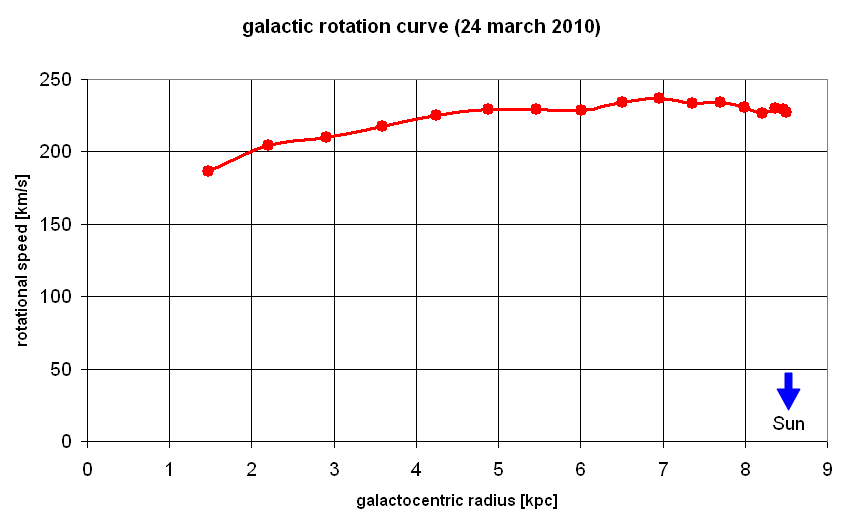The interstellar hydrogen gas of the galactic disk moves in nearly circular orbits around the Galactic Centre. Since the hydrogen emission is in the form of a narrow line at 1420.406 MHz, any deviation of the measured frequency from the known value can be attributed to the Doppler effect, and thus the radial velocity of the gas parcels can be determined.
For the gas on orbits closer to the Galactic Centre than the solar orbit one finds (from velocity-longitude formula) that the radial velocity observable at any galactic longitude (between 0 and 90º) gives information on the rotational speed of a corresponding distance from the Galactic Centre. The geometry is shown here, with the galactic longitude angle l:

It turns out that when the line of sight is tangent to an orbit of radius R, the maximum radial velocity is a direct measure of the rotation speed at that radius.
In the longitude-radial velocity map one can draw curves of constant rotational velocity, i.e. if it were independent of distance from the Galactic Centre. This is done here for three values: 200, 230, and 250 km/s:
One notes that there is no hydrogen emission for rotational speeds larger than about 230 km/s. These fastest moving gas clouds indicate that the rotational speed is about 230 km/s, and that does not depend strongly on the distance from the Galactic Centre.
One may also plot the curve of rotational speed as a function of distance from the centre:

which shows the same fact only in a different way.
That the rotational speed in the Milky Way galaxy is pretty independent of the distance from the centre, is nothing special. All spiral galaxies show the same characteristic. However, that the speed remains constant even out to large distances presents a problem when one wants to explain the speed by the gravitational pull from all the matter: The matter observed in form of stars and gas appears to be insufficient to exert the required pull to keep the gas on a circular orbit. Two solutions to this problem have been proposed: (a) if Newton's law of gravity is correct, one needs to invoke the presence of Dark Matter. The amount of this invisible matter needs to be 5 to 10 times the amount of normal, visible matter. And we have no idea what this matter is ... (b) may be Newton's law which works so magnificiently for the solar system and space flight, is no longer valid on the huge distances invloved in galaxies ...
| Top of the Page | Back to the MainPage | to my HomePage |
last update: March 2014 J.Köppen DF3GJ